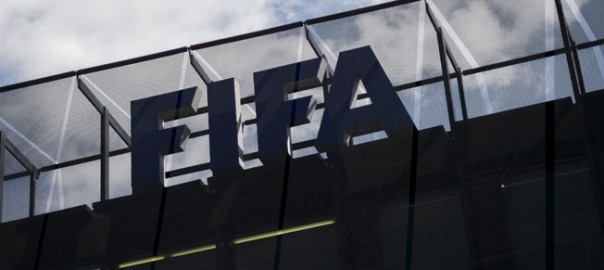Hong Kong has been targeted as the regional franchising hub for many international brands. According to the Hong Kong Trade Development Council, many brands identify Hong Kong as the prime location to set up their franchise network as it is an ideal two-way springboard for gaining access to the Asian markets, and for Asian brands to venture into the global marketplace.
Being one of the world’s freest economy, there is no specific legislation governing franchise operations in Hong Kong, nor are there any exchange controls, foreign equity participation or local management participation regulations. The realms of law that govern franchise agreements are common law, principles of contract law and any legislations relating to registration, licensing and protection of intellectual property rights such as Trade Marks Ordinance, Trade Descriptions Ordinance, Copyright Ordinance, Registered Designs Ordinance and Patents Ordinance.
Despite the lack of regulations in Hong Kong, a non-legally binding association namely Hong Kong Franchise Association (HKFA) offers some guidance on franchising. HKFA defines franchising as a method of marketing goods and services. The basic features of typical franchising arrangement include:
- the franchisor allowing the franchisee to use its name or brand;
- the franchisor exercising continuing control over the franchisee;
- the franchisor providing assistance to the franchisee; and
- the franchisee making periodical payments to the franchisor.
Additionally, HKFA published a code of ethics on their website as a reference for franchisors and franchisees. This code is divided into four sections, including general provisions, provisions relating to franchisor, provisions relating to franchisee and code of ethics for franchise consultants. A copy of the code of ethics can be found at http://www.franchise.org.hk/codeofethics.asp.
The lack of laws and regulations allows maximum flexibility for parties entering into a franchise relationship to freely negotiate their franchise agreements as well as operate the franchise business without the need of seeking approval from authorities. However, more difficulties arise when entering into the Chinese market.
Unlike Hong Kong, franchising activities are overseen by authorities and is highly regulated in our Chinese counterpart. In China, the Ministry of Commerce (MOFCOM) and its commerce regulatory agencies of various level are the regulating authorities. Several laws and regulations govern franchise activities. The primary laws that are applicable includes: Measures for the Administration on Foreign Investment in Commercial Sector; Regulation on the Administration of Commercial Franchises; Administrative Measures for Information Disclosure of Commercial Franchises; and Administrative Measures for the Record Filing of Commercial Franchises (the “Franchise Laws and Regulations”).
To file as a franchisor in China, the franchisor must provide trademark(s) and/ or patent(s) registration certificates issued by the Chinese authority as well as other business operation resources related to the franchise. A minimum of one such certificate is required from the potential franchisor by the Ministry of Commerce (MOFCOM). However, where the potential franchisor is unable to provide such certification, it may be sufficient to provide MOFCOM with a trademark license agreement or equivalent document indicating authorization to use the trademarks and to sub-license the same to franchisees. It is important that the trademark licence documents must indicate that only the licensor and potential franchisor can use the licensed trademarks and that the potential franchisor can sub-license the trademarks to its China franchisees.
A further requirement specified by the Franchise Laws and Regulations is that a franchisor must have a minimum of two direct sales stores, and have undertaken the business for more than one year. This requirement is also known as the “two plus one” requirement. Only a franchisor or its direct subsidiary will be qua1ified for two plus one requirement but not its parent entity.
Another requirement stipulated by the Franchise Laws and Regulations is that a franchisor must provide an exhaustive list of items to be disclosed prior to signing of the franchise agreement. At least 30 days before entering into the franchise agreement, the franchisor shall furnish the franchisee with the following:-
- franchisor’s name, domicile, legal representative, registered capital, business scope and the basic situation of franchising activities;
- basic information of the franchisor’s registered trademarks, corporate logos, patents, proprietary technology and business model;
- type, amount and method of payment of franchise fees;
- price and prerequisites of products providing services and equipment to the franchisee;
- provide specific methods for continuous business guidance, technical support and operation training to the franchisee;
- specific methods of supervising and guiding the operation activities of the franchisee;
- estimated budget of investment for the franchise outlets;
- number, geographical distribution and business conditions assessment of the existing franchisees in China;
- last two years’ briefs of financial accounting report and auditing report which are audited by accounting firm;
- last five years of litigation and arbitration results related to franchising;
- if there’s any serious illegal business records of the franchisor or its legal representative;
- other information prescribed by the commercial administrative department of the State Council.
Having met the preliminary requirements to be a franchisor in China, a franchisor must further register al1 relevant franchising materials with MOFCOM within 15 days after entering into a franchise agreement for the franchise to be valid. A franchisor will be fined from CNY 10,000 up to CNY 50,000 should they fail to register these documents. The materials include:
- a photocopy of the business license or enterprise registration certificate;
- a sample franchise contract;
- a brochure for franchised operations;
- a marketing plan;
- a written commitment and relevant certification materials proving that provisions in Article 7 of the Regulation on the Administration of Commercial Franchises are followed; and
- other documents and materials prescribed by the commercial administrative department of the state Council.
Overall franchising in Hong Kong is relatively straightforward in comparison to China and franchising in China is very onerous on the franchisor while appears to benefit the franchisee. Notwithstanding the difficult and burdensome approval process for franchising in China, the rapid changing demographics, rising incomes and increased consumer spending are all attractive factors for franchisors to break into the Chinese market. As McDonald’s CEO Easterbrook revealed on 31 March 2016, the goal is to make China become McDonald’s second largest market, moving it ahead of Japan and directly behind the U.S by opening 1,000 new franchise restaurants in China in the next five years!









